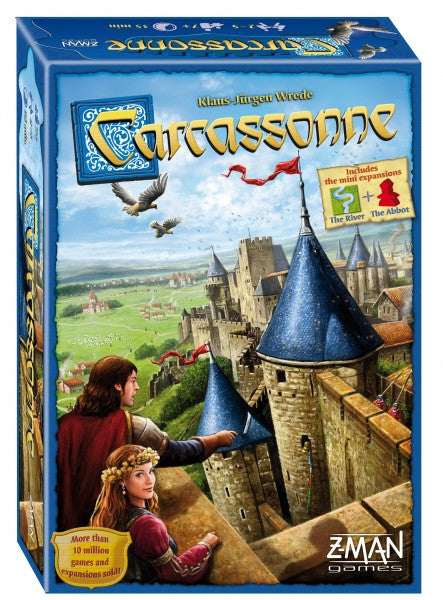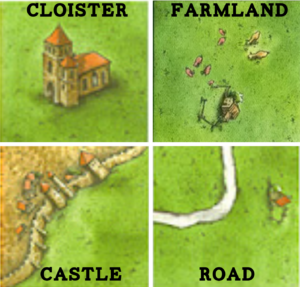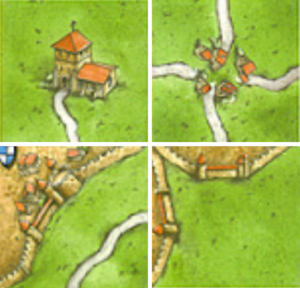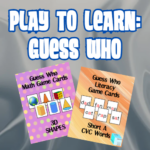Play to Learn: Carcassonne
In the second blog post in the Play to Learn series, we will look at the game Carcassonne. This game is similar to Settlers of Catan, in that it is a Euro-style game. The game is based on mechanics versus story and theme.

Carcassonne is a tile placement game. Players are looking to match tiles and place tiles to gain experience points (XP) . Tiles are picked at random and have illustrations of southern French landscape.

Meeples represent people in the game and score points for the players.

There are four types of tiles in the game.
Farmland, roads, castles and a cloister.

There are also combination tiles, as seen to the right.
Tiles must be placed next to similar tiles: cities to cities, roads to roads and farmland to farmland. Once a tile is placed, players can choose whether or not to place a meeple on the tile: on the city as a knight, on the road as a robber, on a cloister as a monk, or on the grass as a farmer. Players score XP for:
- A completed road- when each end of the road is closed off by an end of some type.
- A completed castle- when the castle is enclosed by walls.
- A completed cloister- when the tile is surrounded with 8 tiles (sides and corners).
- Farmland is scored at the end of a game- each field is worth 3 points per adjacent completed city.
Strategy is key in this game. Do I want to add more meeples to a castle to compete with another player for the points? What type of feature’s scoring will give me the maximum number of XP?
Social emotional skills are practiced while playing Carcassonne, as with any game. Let’s explore some of the content connections.
- Social Studies and History- how does this compare to how cities and civilizations were developed in history? What is the impact of roads, walled castles, farmland, etc.
- ELA- What is the story behind the game? Explain and describe how history relate to what you are doing in the game?
- Math- matching patterns, totaling up scores, etc.
Using this game in a social studies or history class allows students to explore city building during history and the impact it plays on a country, territory, etc. By connecting this to specific learning targets, standards and parts of curriculum, learners experience an authentic way for learners to acquire new content or review content in relevant ways.
Not only is there the base game of Carcassonne. There are many expansions that add more elements to the game.
- Inns and Cathedrals Expansion
- Traders and Builders Expansion
- The Princess and The Dragon Expansion
- The Tower Expansion
- Abbey and Mayor Expansion
- Count King and Robber Expansion
- Bridges Castles and Bazaars Expansion
- Hills and Sheep Expansion
- Under the Big Top Expansion
- Carcassonne Board Game Big Box
Stay in tune for more games to use as tools for education in the Playing to Learn series!




